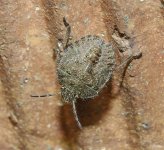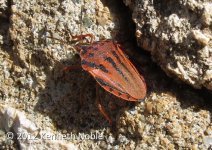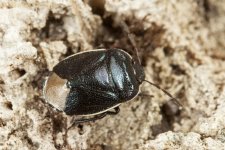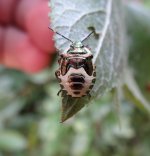Timedrifter
Well-known member
This turned up on the wall of my house this morning. If my ID is right it's a middle to late instar of the Sloe/Hairy Shieldbug. Not much bigger than a Ladybird and nothing like as bright. Like a lot of the previous posters, I just love Shieldbugs. The best source of info I've found so far, are the pages of British Bugs (link below) and if you click on any of the groups, you'll be taken to a page of piccies - very useful.
http://www.britishbugs.org.uk/heteroptera/idcards/life_stages.html
http://www.britishbugs.org.uk/heteroptera/idcards/life_stages.html








